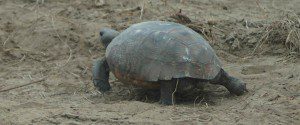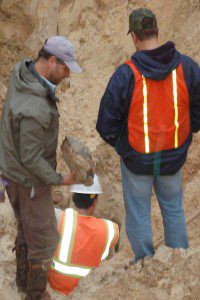
Gopher tortoises, a threatened species in Florida, are being relocated from the first section of the Wekiva Parkway, scheduled to begin construction by early February.
Since December 12 crews have excavated 120 gopher tortoise burrows and some 45 gopher tortoises have been recovered, to date. There are at least 260 burrows that have to be cleared on the site before construction can begin.
Gopher tortoises dig deep burrows for shelter in upland habitat throughout Florida. They share the burrows with more than 350 other species, and are therefore considered a keystone species. Both the tortoise and its burrow are protected under state law.
The gopher tortoises, a threatened species in Florida, are being relocated per state permit to the 643-acre Russakis Ranch, an approved recipient site in Okeechobee County in South Florida. Temperatures at recipient site must be forecast to be above 50 degrees for three (3) days in a row before they can receive the tortoises.

Wekiva Parkway Sections 4A & 4B will extend 3.14 miles from County Road (CR) 435/Mt. Plymouth Road in Orange County, across the Orange County-Lake County Line, to SR 46 west of Old McDonald Road. Construction is starting on this stretch since right-of-way acquisition and permitting are completed.
The $1.7 billion Wekiva Parkway will complete the beltway around Central Florida. The planned 25-mile toll road is a collaboration between the Florida Department of Transportation and the Orlando-Orange County Expressway Authority. The parkway will provide an alternative to Interstate 4, and relieve US 441, SR 46 and other area roads of traffic congestion.
Environmentalists refer to the Wekiva Parkway as a good example of transportation planning through environmentally sensitive areas. Authorized by the 2004 Wekiva Parkway & Protection Act, parkway development has included conserving more than 3,400 acres of land. The parkway will include wildlife bridges, and will be largely elevated to reduce accidents between vehicles and wildlife.


